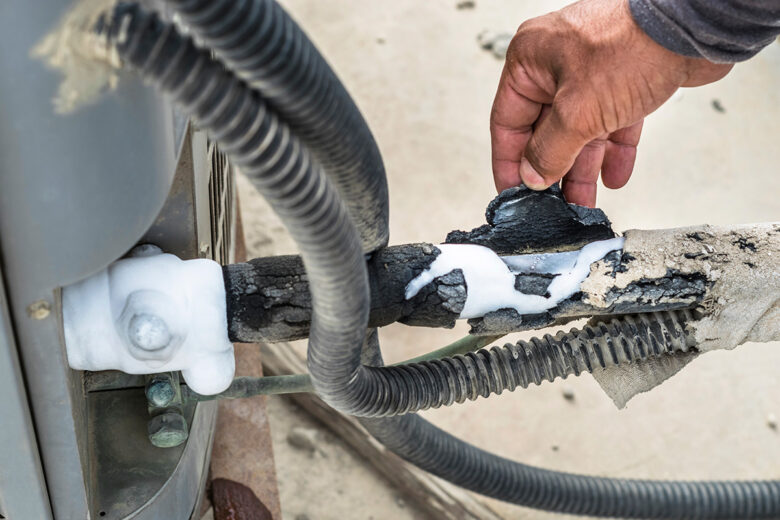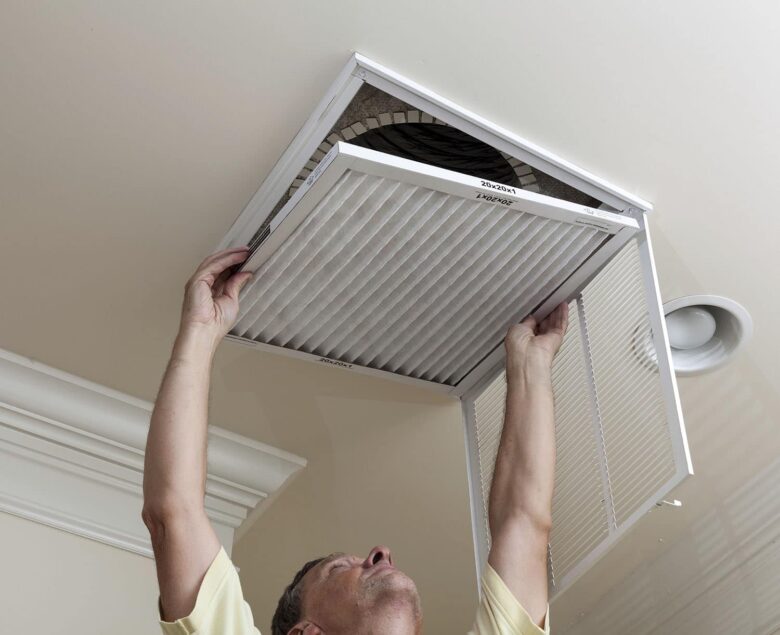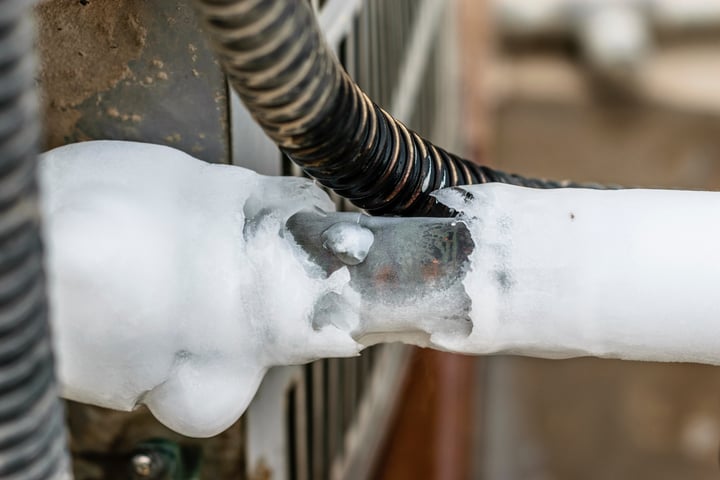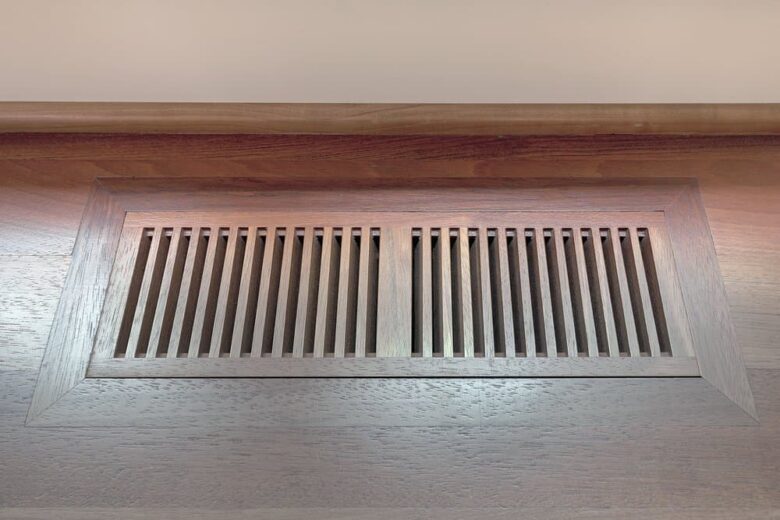Finding your AC blowing hot air is something you wouldn’t want to happen. However, we all face this sort of situation in the oppressive summer months. Once you closely examine the AC, you might find ice on the AC pipes. Ice build-ups are common if you live somewhere with temperatures below 50 degrees. However, you might think it strange to find ice on your AC pipes when the temperatures are high.
At some point, you need to get your AC pipes fixed. Click here to find what established HVAC experts like Hurliman recommend. In this article, we will talk about the common factors that can freeze the pipes of your HVAC system.
Contents
What happens if you have ice buildup in your AC?
In case you have ice buildup in your AC, the temperature of the interiors wouldn’t match your thermostat setting. This is the first sign of the issue, which might gradually worsen.
Also, you might notice that the upper parts of your house are not as cold as they used to be earlier. Even when you adjust the thermostat setting, it continues to bother you. This points to a lack of efficiency of the AC unit. When you place your hand over the blower, it might feel warm. While inspecting the issue, you might find the pipes or coils with a layer of ice. It implies that the refrigerant temperature has dropped below 32 degrees Fahrenheit. As a result, the moisture freezes on the AC pipes.

Source: htgspecialties.com
What causes HVAC pipes to freeze?
Frozen HVAC pipes are a common issue. Check out the common reasons the pipes in your AC might freeze.
1. Low refrigerant levels
With a drop in the refrigerant levels of your AC, the temperature of the refrigerant also drops. This eventually leads to the buildup of ice on the pipe. The pressure decreases in the refrigerant coils with a decrease in the refrigerant level as the remaining fluid becomes colder. So, the moisture freezes and accumulates as ice on the AC pipes.
Remember, the refrigerant circulates in a closed loop in the system, traveling between the indoor and outdoor units. So, if the refrigerant level drops, it might be leaking. Common signs of a refrigerant leak include:
- Warm air coming out of the AC vents
- The refrigerant pipe making noises
- Higher energy bills
Call a professional HVAC expert to detect the leak. The experts would empty the system, detect the leak, and fix it before refilling the refrigerant.

Source: affordablecomfortaz.com
2. Evaporator coil having poor airflow
The function of the evaporator coil of your AC is to keep the air cool. This system consists of a large refrigerant web capable of absorbing the surrounding heat. It then delivers cool air into the interiors. However, if it is not too hot outside, unconditioned air would blow through the evaporator coils of the AC. As a result, the temperature of the refrigerant would drop. Resultantly, the pipes in your AC connecting the outdoor unit might freeze.
Some factors that restrict airflow over the AC’s evaporator coils include:
- Clogged air vents
- Leaky air ducts
- Faulty blower fan
- Blocked air filter
- Dirty evaporator coil
3. Dirty air filter
A frozen pipe in your AC might stem from a dirty air filter. So, if you find the pipes or coils in your AC freezing, inspect the air filter at the outset. With the accumulation of debris and dust, the filter loses its ability to maintain the proper flow of air over the evaporator coils. As a result, these coils tend to freeze. You can simply get a new filter and replace the existing one. Reputed HVAC maintenance companies recommend replacing the filters every three to four months.

Source: airmechanical.com
4. Dirty cooling fins
In case the cooling fins have accumulated too much dirt, they deserve some cleaning. Once you inspect the fins, get a soft brush and do away with the debris or dirt gently.
Besides, find out whether or not all the supply registers in each room are open. The unrestricted airflow might encounter an obstruction in case there is a blockage. Ultimately, it would have an impact on the temperature of the evaporator.
How to fix a frozen AC pipe?
In case you suspect frozen AC pipes, refrain from running the system as it can damage the compressor. Here are a few solutions that might help you deal with a frozen AC pipe.

Source: adams-air.com
1. Thawing the pipe
As a makeshift solution, you can thaw the air conditioning unit. Put the thermostat off and turn on the fan. After a few hours, you can switch the cooling mode on. This would prevent damage to the compressor as you brace up for the next step. However, this is a temporary solution and won’t fix the actual problem.
To turn off the electric supply, you can use the electrical breaker box as well. However, this method is slow, and the thawing process might take up to 24 hours.
2. Check the vents
The supply and return vents of your AC should remain open even in rooms you are currently not using. Any obstruction can interfere with the exchange of heat around the evaporator coil. Maybe you have some household appliances, curtains, or furniture blocking these outlets. With open vents, the ducts would have lower pressure. This would enhance the efficiency of the AC, lowering the loss of cool air.

Source: heatandaircontrollers.com
Endnote
Well, you might have tried all possible measures and thawed the pipes of your AC. The problem might persist even after opening all the vents around your home. Some technical glitches are beyond the scope of laymen, so you need to call in the HVAC experts. Reputed professionals can help you navigate your way out of the mess. They would look into the issue and recommend the right schedule to get your HVAC system maintained. With professional hands, you can rest assured about the functional competence and lifeline of your AC.
